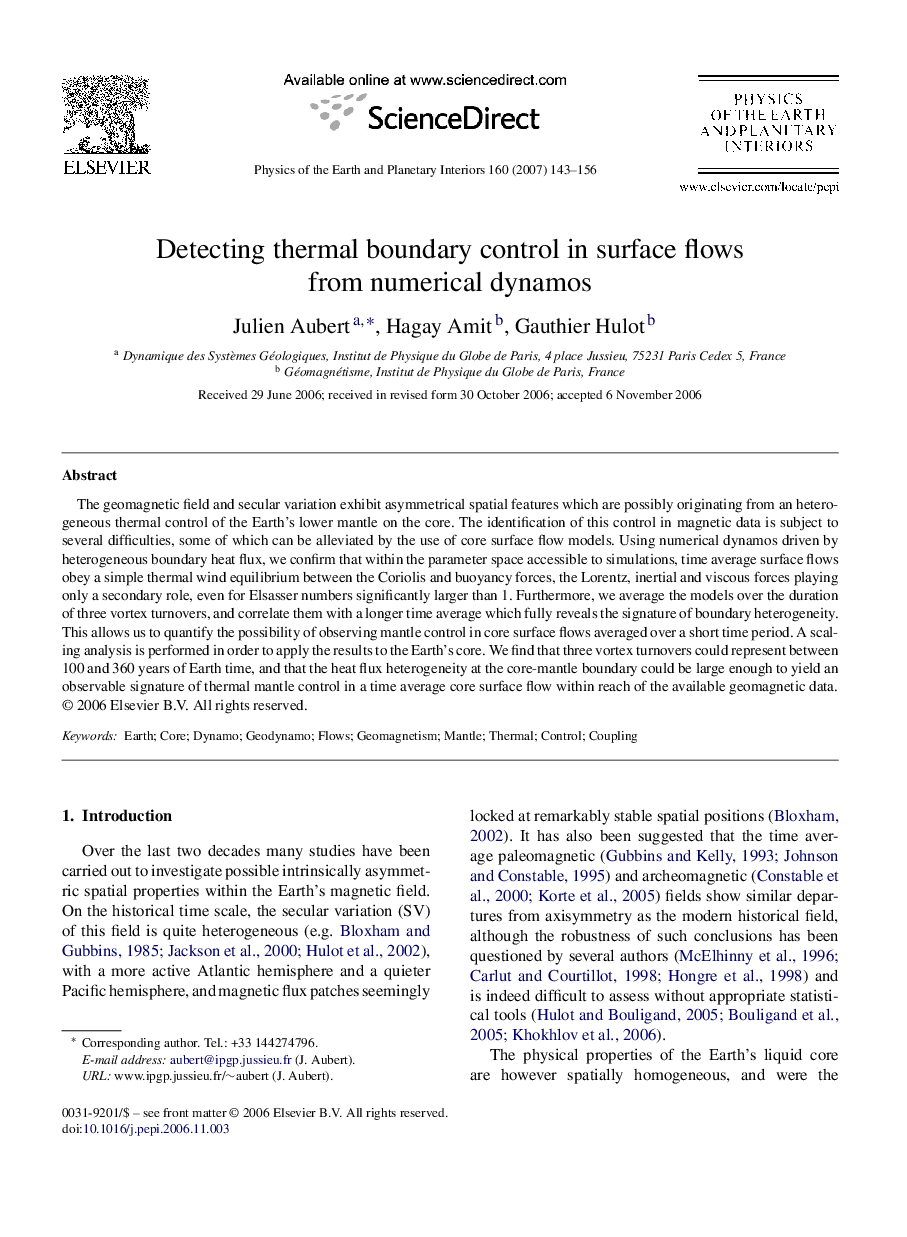| Article ID | Journal | Published Year | Pages | File Type |
|---|---|---|---|---|
| 4742584 | Physics of the Earth and Planetary Interiors | 2007 | 14 Pages |
The geomagnetic field and secular variation exhibit asymmetrical spatial features which are possibly originating from an heterogeneous thermal control of the Earth's lower mantle on the core. The identification of this control in magnetic data is subject to several difficulties, some of which can be alleviated by the use of core surface flow models. Using numerical dynamos driven by heterogeneous boundary heat flux, we confirm that within the parameter space accessible to simulations, time average surface flows obey a simple thermal wind equilibrium between the Coriolis and buoyancy forces, the Lorentz, inertial and viscous forces playing only a secondary role, even for Elsasser numbers significantly larger than 1. Furthermore, we average the models over the duration of three vortex turnovers, and correlate them with a longer time average which fully reveals the signature of boundary heterogeneity. This allows us to quantify the possibility of observing mantle control in core surface flows averaged over a short time period. A scaling analysis is performed in order to apply the results to the Earth's core. We find that three vortex turnovers could represent between 100 and 360 years of Earth time, and that the heat flux heterogeneity at the core-mantle boundary could be large enough to yield an observable signature of thermal mantle control in a time average core surface flow within reach of the available geomagnetic data.
